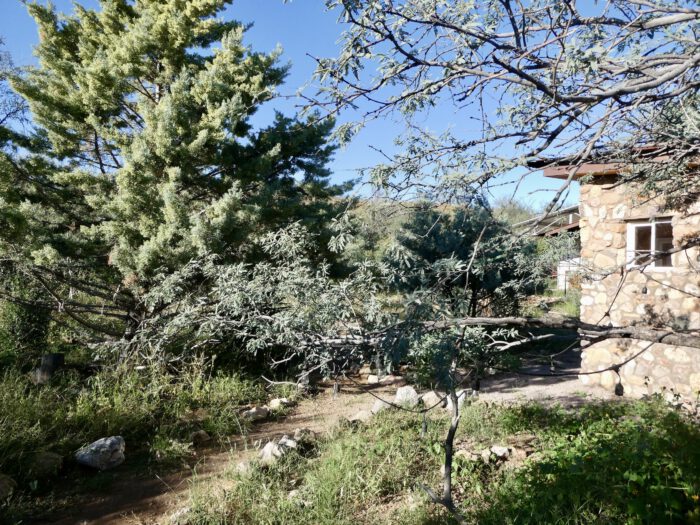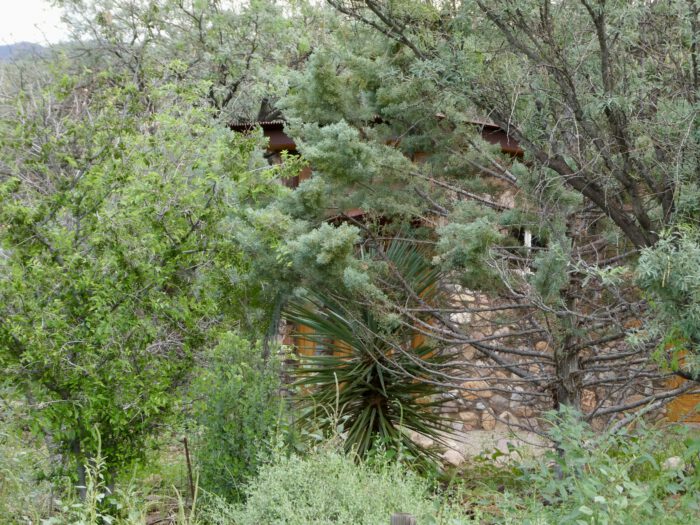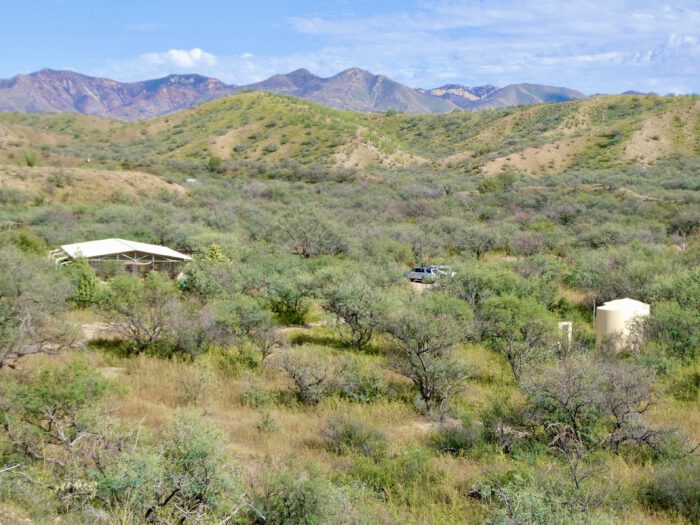2008
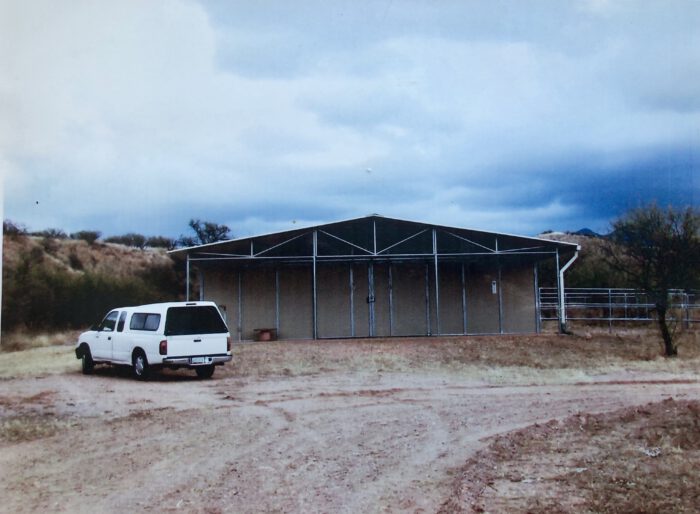
Upon arrival to Raven’s Nest, Vincent and Claudia inherited a 2,000 square-foot horse barn, built in the late 1990’s by the original owners. Their 2 horses certainly left an indelible imprint on the land. Unfortunately, the second owner had a total aversion to plants, boasting about his weekly weed-whacking crew. Needless to say, the land around and in front of the Sky Islands Discovery Center was a razed landscape. The second owner also used the horse barn to park his power boat, destroying all of the habitat leading to it.
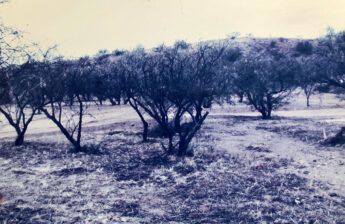
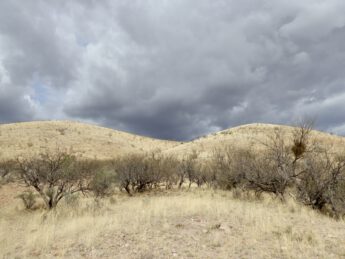
Despite the very grim and dessimated landscape surrounding the horse barn as well as the dirt inside the metal building, it immediately dawned upon Vincent and Claudia to transform it into their Sky Islands Discovery Center. This was in an effort to inspire others to protect the dwindling wildlife and to spread their impassioned Sky Islands conservation message. Establish the Sky Islands Discovery Center has certainly been a very rewarding experience. It is devoted to showcasing Vincent’s dazzling Natural History collection which reflects the diverse array of habitats and species in the Madrean Archipelago.
SKY ISLANDS DISCOVERY CENTER – 2025
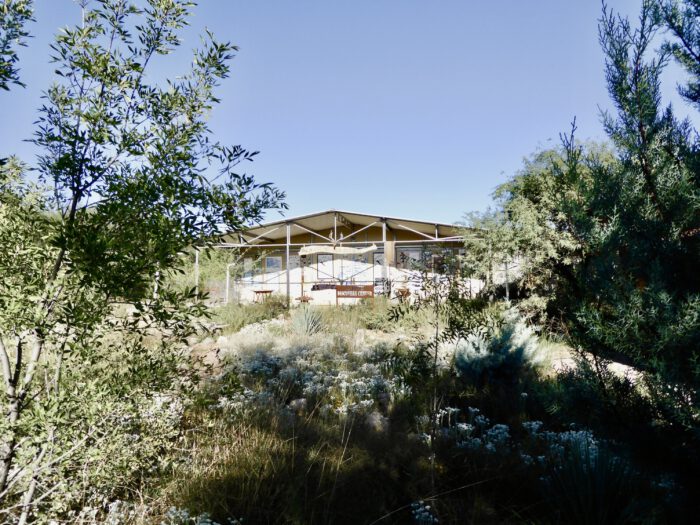
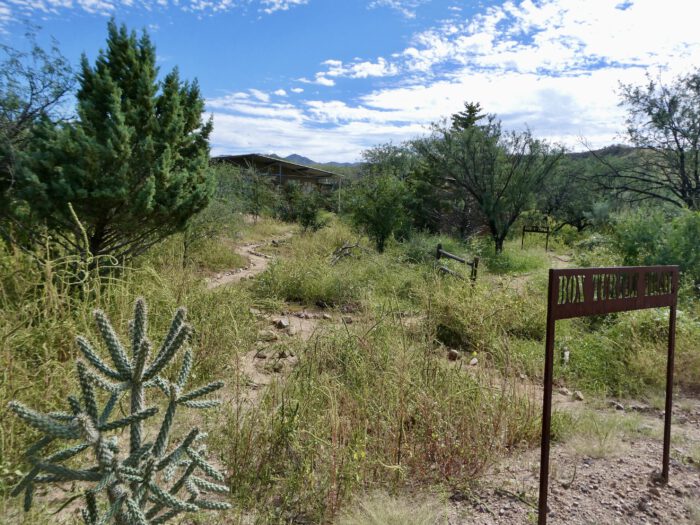
ETHNOBOTANY LANDSCAPE BY DISCOVERY CENTER
As a professional Ethnobotanist, Vincent wanted to create an Edible, Medicinal, and Useful Landscape surrounding the Sky Islands Discovery Center. Therefore, every native species he planted has important human uses. Some species provide food, others herbal medicine, while select plants produce parts useful for rope, tools, soap, aromatherapy, and other uses. Additionally, all of the species listed below support native pollinators – either as a larval food source and/or as a source of nectar. Thus, countless species of insects, butterflies in particular, as well as dashing Hummingbirds of various species are a common sight at Raven’s Nest, especially where we have performed ecological restoration.
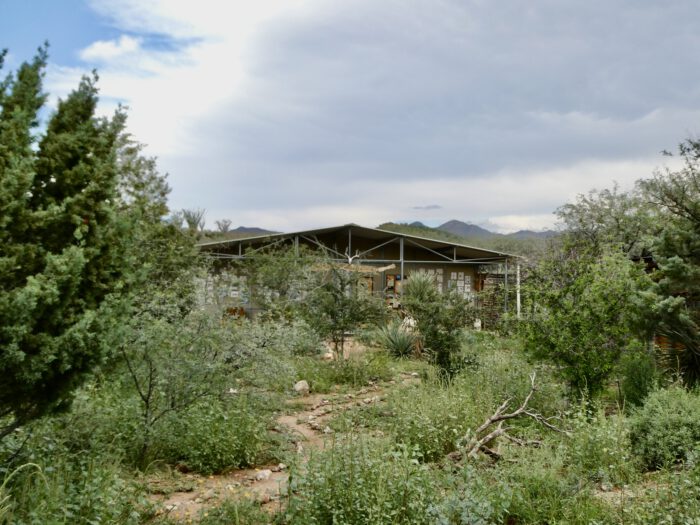

The species Vincent planted around the Sky Islands Discovery Center include:
Trees
- Scrub Oak – edible acorns, tannic acid for medicine
- Velvet Mesquite – edible pods, edible sap, firewood
- Catclaw Acacia – firewood, topical wound care from leaves
- Arizona Rosewood – wood-working
- Velvet Ash – medicine
- Netleaf Hackberry – edible fruit
- Desert Willow – edible flowers, medicinal leaves
- Texas Mulberry – edible fruit, rope from inner bark
- Western Soapberry – soap and medicine from fruit
- Alligator Juniper – edible fruit, medicine from leaves, aromatherapy from sap and leaves
- Arizona Cypress – medicine and aromatheraphy from leaves, tinder from inner bark, glue from sap
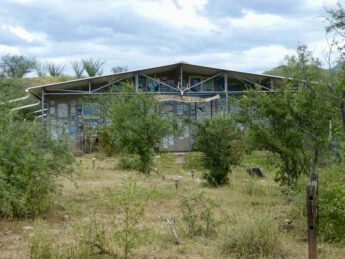
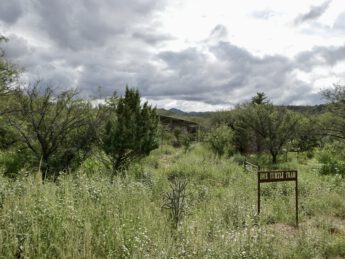
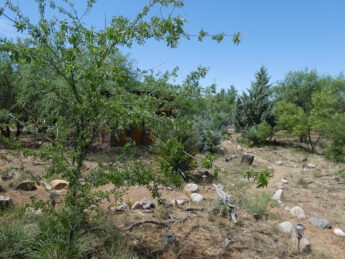
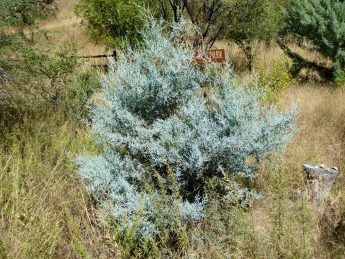

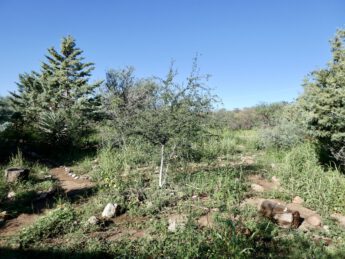
Shrubs
- Cat Claw Mimosa – medicine from leaves
- Apache Plum – tinder from shedding bark
- Evergreen Sumac – edible/medicinal fruit
- Wild Cotton – rope from inner bark
- Fremont Wolfberry – edible fruit
- Mariola – aromatherapy and medicine from leaves
- Dalea – aromatherapy and medicine from leaves and flowers
- Graythorn – edible fruit
- False Indigo – kindling from stems and dye source
- Mexican Elderberry – edible flowers and fruits, fire-by-friction sets from wood
- Wright’s Silktassel – medicinal leaves – used as an anti-malarial medicine in WWII
- Oreganillo – spice and aromatherapy from leaves
- Desert Honeysuckle – basketry
- Seepwillow – hand-drills for fire-by-friction kits, medicine from leaves
- Arroyo Willow – basketry from stems, medicine from leaves and inner bark
- Broom Snakeweed – tinder, medicine from leaves
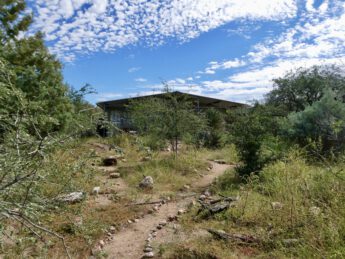
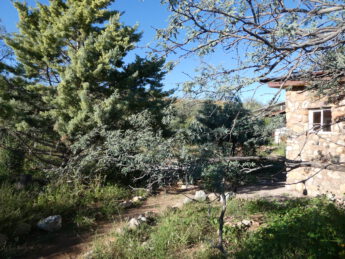
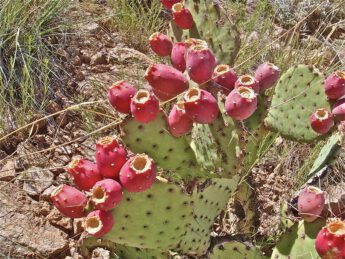

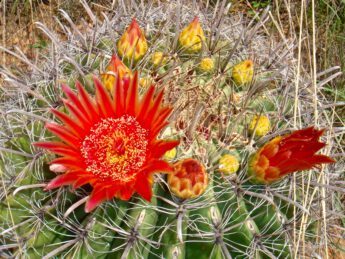

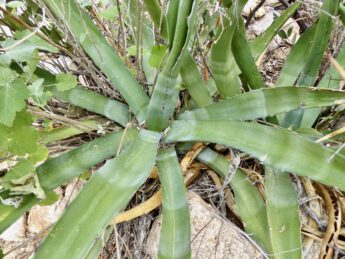

Succulents
- Cane Cholla – edible fruit, woody skeleton for tool handles
- Chainfruit Cholla – edible fruit
- Santa Rita Prickly Pear – edible fruit, medicinal pads
- Mountain Yucca – edible fruit, rope from leaves, medicine from roots
- Soaptree Yucca – edible flowering stems, soap and medicine from roots, fire-by-friction sets from dried flowering stalk
Other Plants
- Arizona Cottontop grass – tinder, basketry

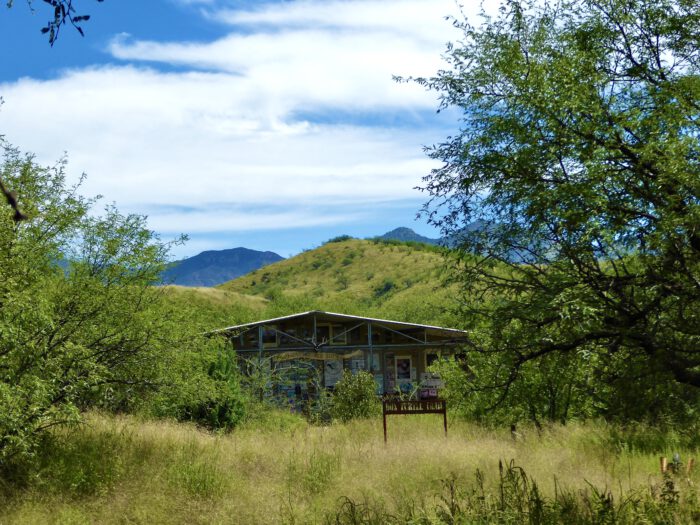
In addition to supporting a myriad of native pollintaors, the wide range around the Sky Islands Discovery Center also furnish critical habitat for a broad spectrum of other wildlife. Bobcats, Mountain Lions, Coyotes, Common Gray Foxes, Ringtails, Northern Raccoons, 4 species of Skunk, Collard Peccari, White-Tailed Deer, as well as a plethora of birds, reptiles and amphibians.
INSIDE THE SKY ISLANDS DISCOVERY CENTER
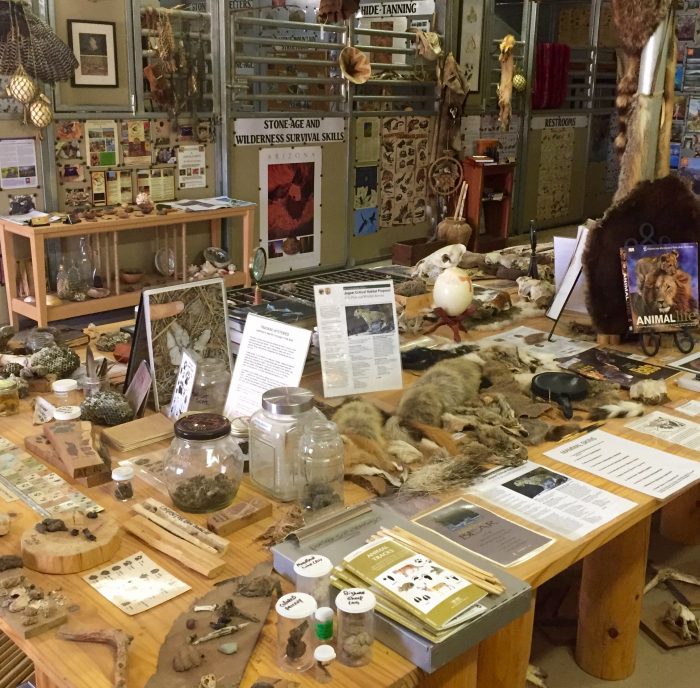
Since his youth, Vincent has been disheartened by the catastrophic impact of wildlife roadkill – all the devastating deaths or injuries inflicted upon wild animals by vehicular collisions. Cummulative road kill leads to significant ecological consequences, including the endangerment of certain species and negative impacts on wildlife populations in general. Therefore, Vincent become determined to learn how to tan the hides and process various animals killed on the road. Honoring wildlife, raising awareness and educating the public are the goals of Vincent’s Sky Islands collection. Thus, the Discovery Center showcases the biodiversity of the Sky Islands via tanned hides, bones, skulls, and countless other museum-quality displays. Vincent and Claudia are proud to present this key educational tool to the public, celebrating the world-class biodiversity of the Madrean Archipelago.

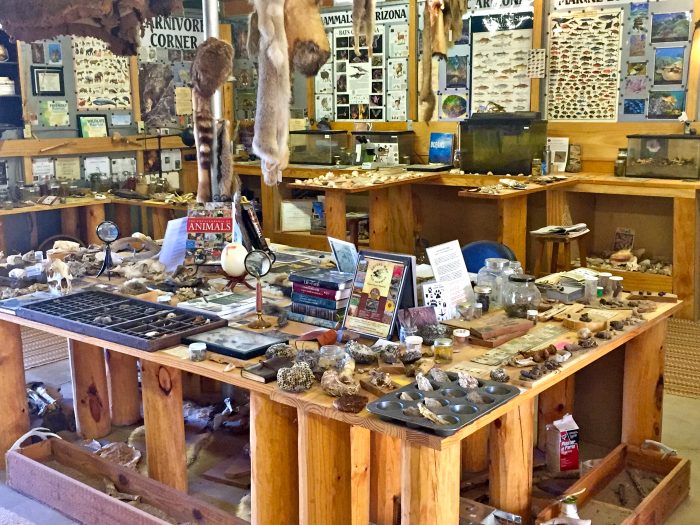

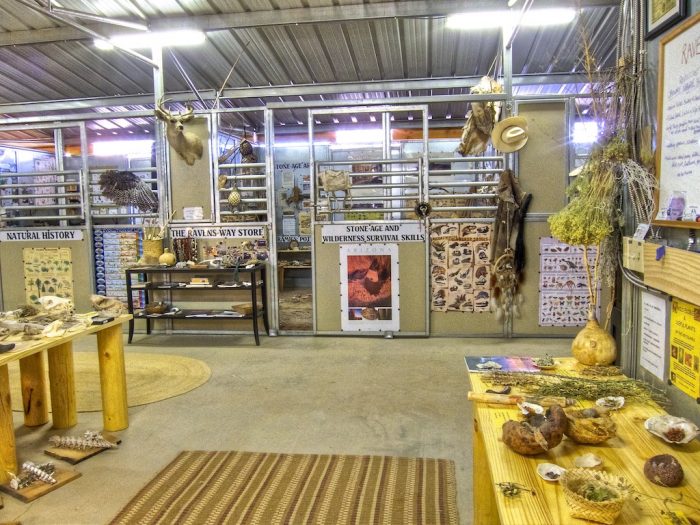
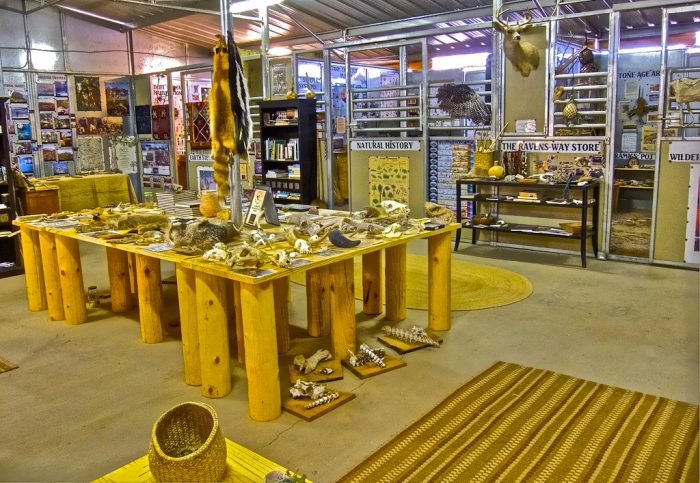
AROUND THE SKY ISLANDS DISCOVERY CENTER
We also converted the outside of the former horse stalls abutting either side of the Discovery Center into a combination of Organic Orchards and Organic Edible Gardens . Several Plum and Quince trees, a few Pomegranates, and several species of tall Prickly Pear furnish seasonal fruit. Meanwhile we planted the ground to various vegetables and fruits over the years – all fueled by our home-grown compost, which has its own dedicated area not far from the gardens. The Bell and Shell Gardens on either side of the Discovery Center, now beckon any visitor to linger and literally enjoy the fruits of the land.
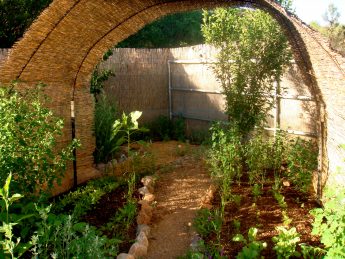


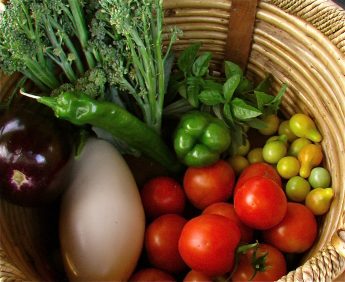
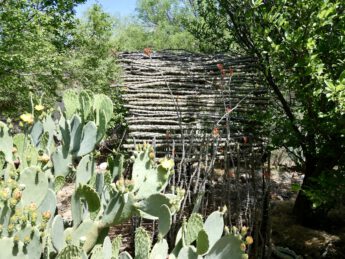



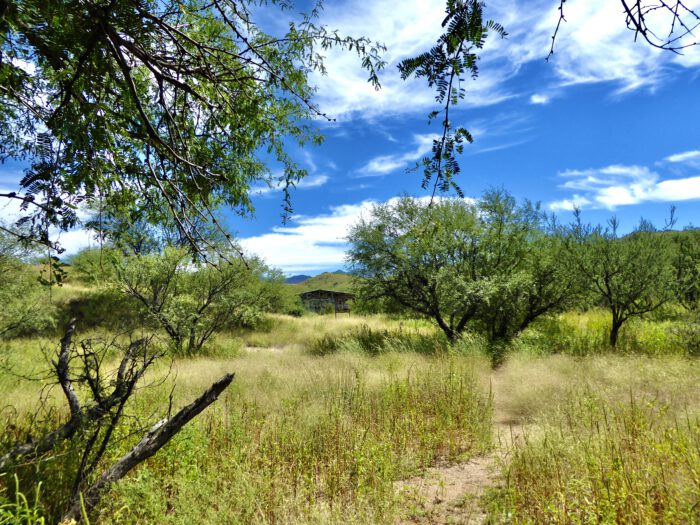
NIGHTHAWK NOOK
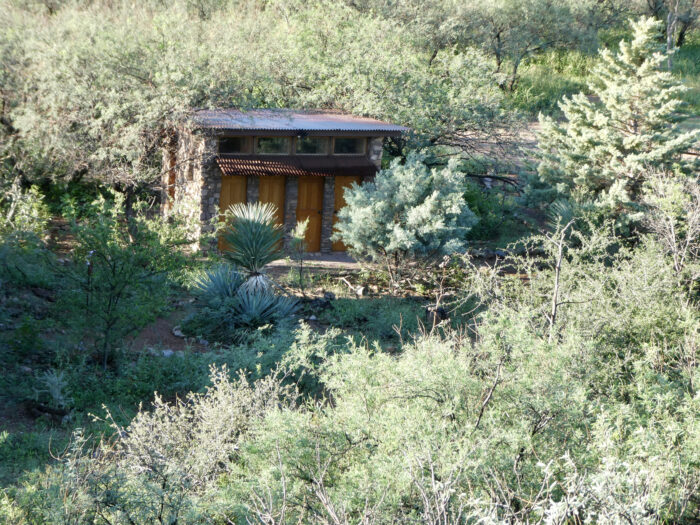
While now it’s hard to imagine that the Sky Islands Discovery Center was a former horse barn, it was certainly equiped with all the accoutrements that included horse stalls and an outside horse washing area – set up over a cement floor and conveniently located by a hose bib. Always guided by recycle and re-use principles, Claudia leverged all the existing infrastructure and avoid any waste of materials. Thus, the cement floor became the very foundation for the Nook – a gorgeous stone building housing 2 state-of-the-art stainless steel Incinerator Toilets, and 4 indoor hot showers.
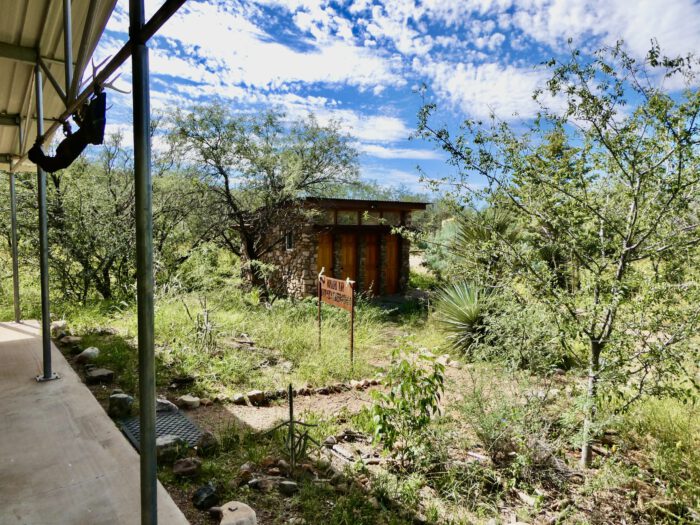
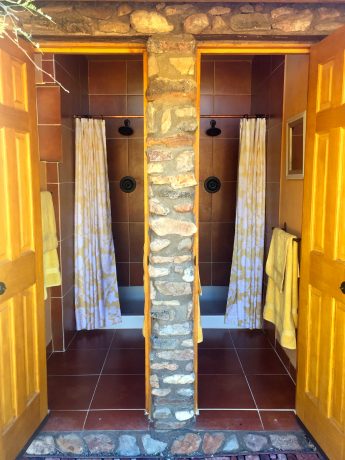
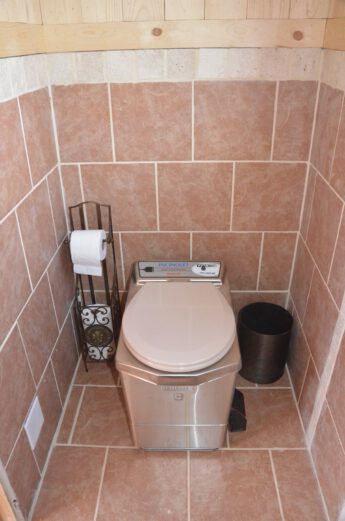
- 4 indoor showers at Nighthawk Nook are set up for Gray-water recycling, allowing the reuse of all the precious water and benefiting the surrounding native trees and useful plants.
- 2 state-of-the-art, stainless steel Incinerator Toilets are hygenic and energy-efficient and also allow all of the resulting ashes to be used as compost for the Velvet Mesquite trees.
